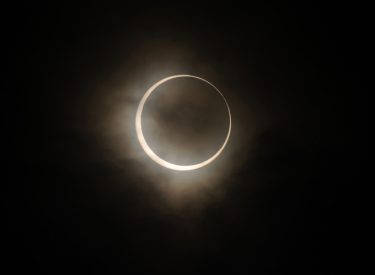Solar eclipse will be visible next week
Mike Seals - June 2, 2021 10:15 pm

FILE: TOKYO, JAPAN - MAY 21: Annular Solar Eclipse is observed on May 21, 2012 in Tokyo, Japan. It is the first time in 25 years since last annular solar eclipse was observed in Japan. (Photo by Masashi Hara/Getty Images)
(NEXSTAR) — If you thought May’s “super flower blood moon” lunar eclipse was a sight to behold, just wait until next week’s “ring of fire” solar eclipse.
On June 10, when a new moon occurs, skygazers across the globe will be able to view this year’s first solar eclipse.
Unlike a total solar eclipse, which occurs when the moon passes directly between the Earth and the sun, causing the sun to be completely blocked, next week’s eclipse will be annular, which only occurs when the moon is in its first phase.
The new moon will be farther from Earth in its elliptical orbit and will appear smaller — too small to cover the sun completely. As a result, a bright ring of sunlight will surround the moon’s silhouette at mid-eclipse. That bright outer rim has become known as the “ring of fire.”
“As the pair rises higher in the sky, the silhouette of the Moon will gradually shift off the sun to the lower left, allowing more of the sun to show until the eclipse ends,” NASA said.
How to watch
The new moon will eclipse the sun at 6:53 a.m. ET. on June 10.
Look east to see it, but remember it’s unsafe to look directly at the sun unless you wear special eclipse glasses to protect your eyes.
“From the Washington, D.C. area, the moon will be blocking about 80% of the left side of the sun as they rise together in the east-northeast at 5:42 a.m., causing the sun to appear as a crescent,” NASA said.
Parts of Canada, Greenland, the Arctic Ocean, and Siberia will have a complete view of the narrow path of the annular eclipse, according to NASA. It will be a partial eclipse for much of the rest of northeastern North America, Greenland, Northern Europe, and northern Asia.
If you can’t watch in person, a livestream will be available on timeanddate.com.
This will be the first of two solar eclipses in 2021, with a total solar eclipse to occur on Dec. 4.



